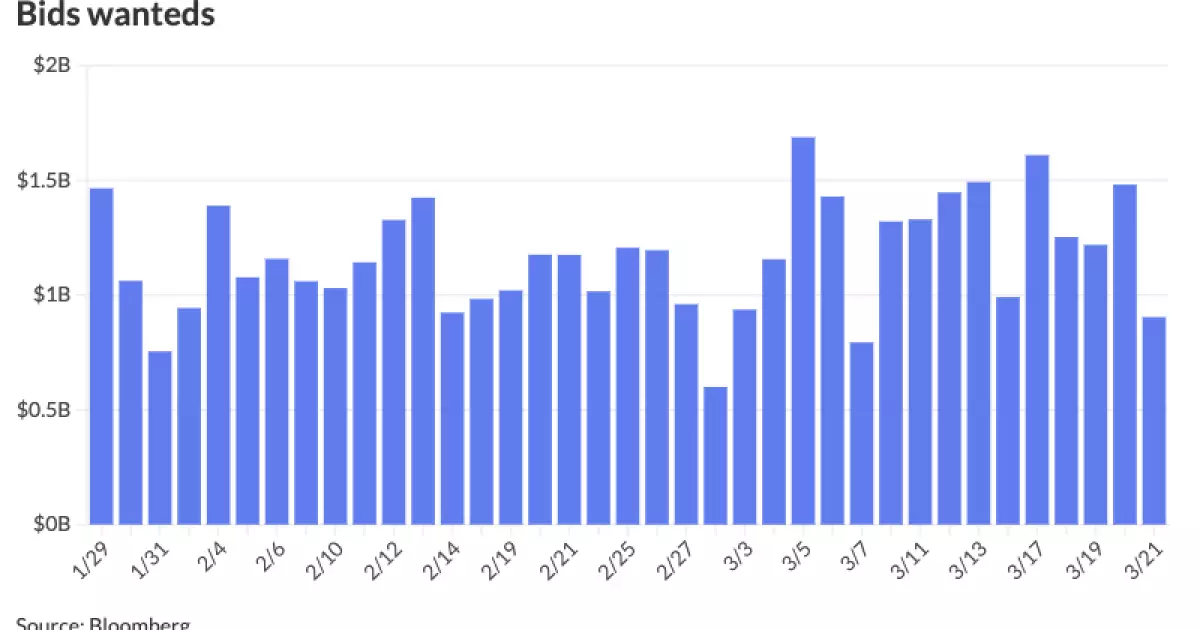The municipal bond market, often viewed as a bastion of stability and safety in the broader financial landscape, is currently facing several pressing issues. While many investors still regard munis as a favorable investment option, recent trends indicate underlying volatility that could disrupt established norms. This article dissects the alarming turn of events in the municipal bond sector, showcasing critical insights that investors should be acutely aware of.
Rising Treasury Yields: The Gravitational Pull
There’s no denying that municipal bonds have seen a downward trend as U.S. Treasury yields continue to rise. The two-year munis to U.S. Treasury (UST) ratio showcased alarming figures, with the latest ratio resting at 66%. This is echoed across different maturity benchmarks, escalating concerns among current and potential investors alike. When Treasury yields rise, they create a competitive environment, making munis less appealing. Why retain lower-yielding securities when there are potentially higher returns on the horizon? This rising tide of yields not only affects the market but introduces an intimidating inertia that could push many investors out altogether.
The Volatility Conundrum
What makes this scenario even more disconcerting is the rising volatility in the municipal market. Recent reports have indicated significant fluctuations—yields were cut by as much as four basis points across various maturities, exacerbating concerns for market stability. Rising volatility isn’t merely a statistic; it’s a signal that the market is reacting to larger economic conditions, heightened uncertainty, and lack of confidence among investors. As investors flee from perceived risk, the overall demand for municipal bonds weakens, undermining their traditional reputation as a safe investment.
New Issuances: A Flood or Drought?
While the market has been characterized by robust new issuance, this can be misleading. The fact that municipalities are issuing bonds at record rates can signal that they are either capitalizing on favorable market conditions or desperately trying to finance deficits. If the latter holds true, investors may want to beware. This deluge of new issues contradicts current demand levels, straining the market further. The fear of oversaturation looms large, suggesting that the available supply may overwhelm demand, pushing prices down and yields sharply higher.
Investor Sentiment: A Cautious Retreat
Investor sentiment is another troubling aspect. Recent outflows from municipal mutual funds have shocked many in the market—a staggering $216.4 million was withdrawn last week as investors pulled away due to rising yields and tax-related sell-offs. This withdrawal isn’t just a fleeting response; it could indicate a fundamental shift in how investors perceive risk in municipal bonds. If continued, this trend could lead to a spiral of decreasing interest, creating an even more precarious situation for long-term holders of these securities.
Long Maturities: The Last Bastion?
Interestingly, the long-end of the municipal curve has seen some support, as noted by several analysts. Yet, the fact that investors are primarily looking for refuge in long maturities suggests a reluctance to commit to shorter-term securities amidst rising uncertainty. Surging yields in the short-to-medium term could foster a disillusioned investor base that may avoid new issuances altogether, which could further destabilize an already rocky landscape.
Market Paradox: Cheap vs. Attractive
There’s an ironic twist in the conversation about valuation in the current environment. Analysts note that despite evident weaknesses, some segments of the market remain “attractive” due to their cheapness. This word, however, is often misunderstood. Just because a bond is cheap does not mean it will rally; it may simply reflect the market pricing in heightened risk. The myth of “attractive valuations” could soon unravel—especially for investors eying steady returns devoid of exorbitant risks.
A Dismal Outlook Moving Forward
As we gaze into the future, there’s little solace in the trends that are currently unfolding in the municipal bond space. The blend of rising Treasury yields, heightened volatility, significant outflows, and a potentially flooded market create a perfect storm for disenchanted investors. This period of uncertainty may serve a stark warning: tread lightly in the municipal bond market as we usher in turbulent economic conditions. This isn’t merely about navigating a few dips; it’s about reevaluating the very frameworks through which we’ve historically viewed these securities. The stability of municipal bonds might just be more illusory than we’ve been led to believe.

